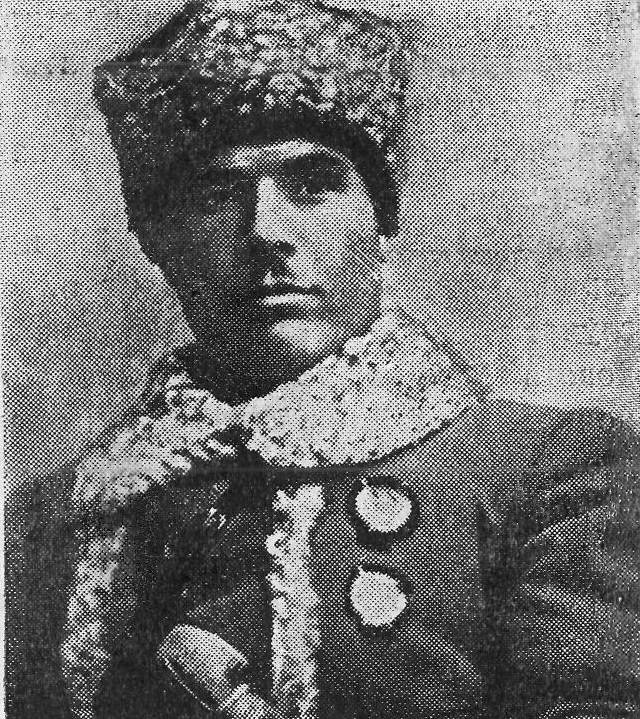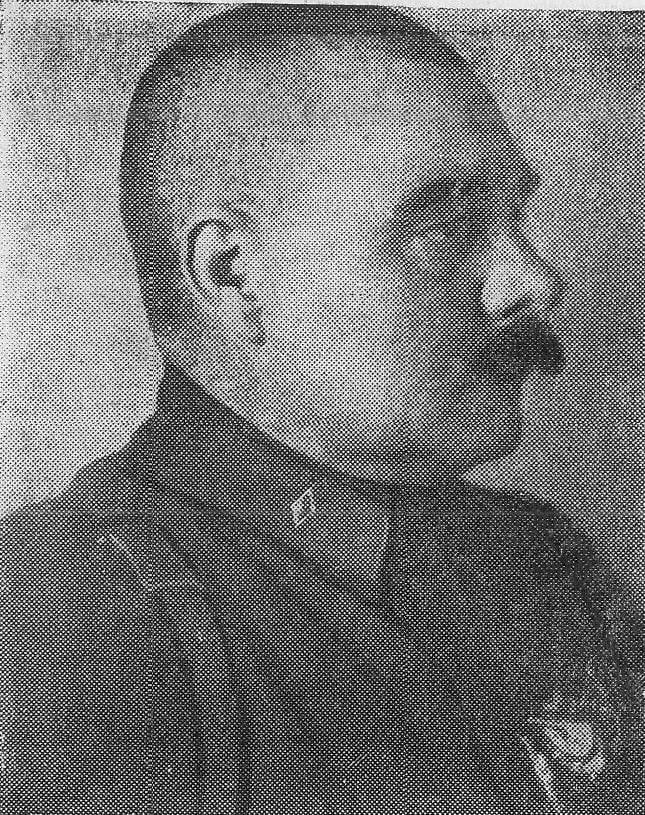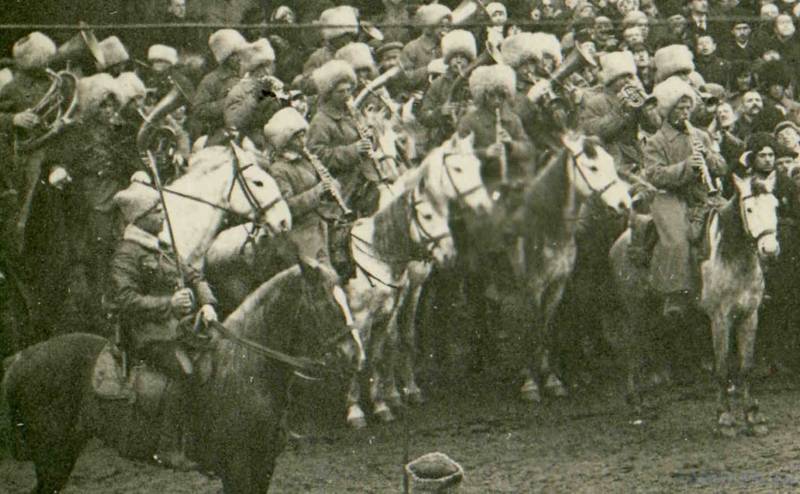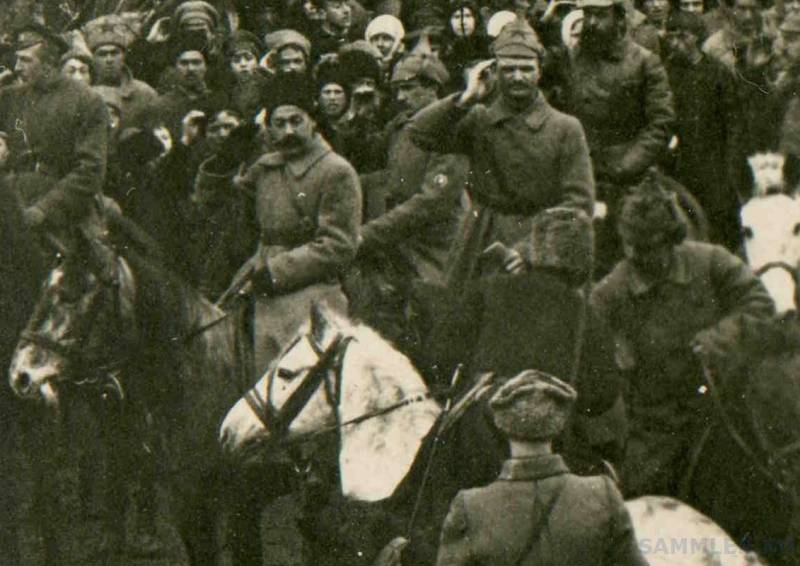On Rostov! Part of 1
1-I Horse Army
The shock group of the front (1-I Cavalry Army) was assigned the task:
“Rapidly pursuing a defeated enemy, the main mass of their group, including at least 2 cavalry divisions, immediately throw in the direction of Rostov - Nakhchivan to capture those no later than 7.1 on the station Aksayskaya to the mouth of the r. Don. Send a smaller part of the group to capture Taganrog in the shortest possible time and assist the 13 Army in accomplishing the task ”.
The 8 Army was also aiming at Rostov - Nakhichevan at the same time.
To fulfill this directive, the units of the Cavalry Army (Order of the Cavalry Army No. 1 / op) were ordered to take up their original position by the evening of 6 January:
9 th Infantry Division - Nikolaev - Kazan - Art. Koshkino - Sambek;
12 th Infantry Division - Kurlatskaya, Abramov - Novostratonsky - Migrin Council;
6 Cavalry Division - Petrovsky - Chistopol - Persianov, Ivanovsky - B. Strong;
4 Cavalry Division - Platovsky - Ivanovsky - Prince, Agrafenovka - Krepinsky;
11 Cavalry Division - Matveyev Kurgan (division left in the army reserve).
Armored trains ordered to ply in two directions: Matveyev Kurgan - Taganrog and Art. Kolpakovo - Zverevo.
The assistant to the artillery inspector of the army, Krivenko, who commanded the armored trains, was assigned the following task: “Having subjugated the armored train No. 100 with a long-range naval gun, which fire at 27 versts, shoot down the enemy's armored train and take Taganrog under fire and transports departing by water”.
History he is silent how one of these guns was able to successfully accomplish three such major tasks, but respect for its power was shown.
The units of the Cavalry Army, without any resistance from the enemy, went to the indicated areas at the appointed time.
By the 9th part of the 13th Infantry Division, Taganrog was occupied on January 00th, which the enemy left without a fight. Huge military booty was captured in the city, including 6 heavy English guns, 12 bomb launchers, Tanks, cars, cartridges, shells, gasoline, kerosene, medicines, etc.
The enemy tried to destroy a lot before withdrawal, but exemplary order reigned in the city.
The armored train "Communist" and "Red Cavalryman" advanced beyond Taganrog - and began to fire on Art. Sinyavskaya.
The connections of the 4 Army - 8, 16, 15 and 31-I divisions began to approach the left flank of the strike group - the 33 Cavalry Division (Agrafenovka) began to approach the area.
Thus, 6 rifle divisions, 3 cavalry brigades and cavalry brigade 33 of the Kuban division were aimed at the Rostov-on-Don-Nakhichevan-on-Don section. The 15 and 16 and 31 rifle divisions each had 800 - 1000 bayonets - but in total there were significant forces.
On January 6, the order was given to the Cavalry Army No. 2 — which were assigned final tasks for the capture of Rostov and Nakhichevan.
The narrowing front of the offensive no longer contained all the troops of the strike group, so the 9 th rifle division was tasked with defending a section of the Azov Sea coast: Maryevsky - Nosov - Manuilovsky - Taganrog - Bezsergenevka and Tsarev Dar.
The rest of the troops were to capture Rostov in two jumps, for which order: 12 th rifle division left 7 January on the line Donets (15 km north-west of Rostov) - Wet - Chaltyr - Crimea - Sultan - Sala, and 8 January jointly with 6 th cavalry division take Rostov and defend p. Don; The 6 Cavalry Division of 7 in January, to seize Sala-Nesvitaysky - Generals' Bridge, and 8 in January - Rostov; 4 of the January 7 cavalry divisions reach the line - Konstantinovsky - Yudin - Serafimov - Voloshin (Olginsky), January 8 - Nakhichevan, Art. Aksay, capturing a floating bridge over the river. Don opposite st. Olginskaya; 11 Cavalry Division - Army Reserve - January 8 go to Kurpichiov - Aleksandrov - Migrin Council, January 9 - Sala, January 10 - Art. Aksai.
The divisions were ordered to perform no later than 07. 00. 7 th January. The order in the cavalry divisions was received with a delay - and on January 7 some of them could not start its implementation.
So, the 6-I cavalry division got it in 12. 00., And 4-I cavalry division - only in 15. 30.

S.K. Tymoshenko - Head of the 6 Cavalry Division
Before A. I. Denikin, after unsuccessful battles in the Donets Basin, the question of the possibility of stabilizing his front was on the agenda. Although the flanks of his front were experiencing some equilibrium, the center, under the pressure of the strike group of the Southern Front, catastrophically rolled back to the south. At the end of December, he was still trying to delay this withdrawal, to level the front, by giving an order in which he set tasks for his armies: Caucasian, operating in the Tsaritsyn area, to withdraw beyond the r. Sal, covering the Stavropol and Tikhoretsk directions; Don and Volunteer - get between pp. Mius and Donets on the line Tsimlyanskaya - Ust - Belo-Kalitvenskaya, Kamenskaya - Rovenki - Matveyev Kurgan, Liman - Miusi, covering Rostov - Novocherkassk.

I. R. Apanasenko - Brigade Commander 6 Cavalry Division
A. I. Denikin noted that the delay of his armies was all the more necessary because the transfer of reinforcements to Rostov had not yet been completed, and the army’s rear, Taganrog-Rostov-Novocherkassk, had not yet been evacuated. In the near bridgehead, Rostov-Novocherkassk, the reserve of the Commander-in-Chief of the All-Russian Soviet Union of Civil Defense under the command of General Toporkov (the 1,5 cavalry division, the Plastun brigade and the 2 officer schools) was concentrated. If necessary, this position was supposed to give the enemy a decisive rebuff.
Assumptions A. I. Denikin did not materialize. The general noted that the above-mentioned line could not be kept: the retreating inertia, due to many reasons (mainly of moral character), attracted the troops to the natural boundary - r. Don. As a result, by December 23 - 24 (5 - January 6), first with the battle, and then in isolation from the enemy, the volunteers and the Don team retreated to the Rostov-Novocherkassky springboard. The central group of the VSYUR was focused on the 80-km front, and the general decided to give the Red a battle - all the more so that by that moment the fatigue and frustration of his opponent’s armies had become apparent. The 20 of December (2 of January) also operatively subordinated General Sidorin to the Volunteer Corps - and Sidorin covered Rostov with volunteers, Novocherkassk from Don, while in the center (on the ledge) mounted cavalry corps of Mamontov and Toporkov.
This is how A. I. Denikin described the position of his front, which took up positions on the approaches to Rostov and Novocherkassk. He did not think to give the Rostov-Novocherkassk bridgehead without a fight.
According to Soviet intelligence, the commander-in-chief of the WSYUR 6, on January 13, began to concentrate large masses of infantry on the line Crimea - Sultan-Sala, Sala. The cavalry was consolidated into a strong group (the corps of Toporkov and Mamontov - up to 5000 sabers) and advanced to the area of Generalsky Bridge - (Voloshin (Olginsky) and Kuteynikov - Nesvitaysky with the task of actively counteracting the Red forces advancing on Rostov.
The Don Army was grouped in the Aleksandrovka-Grushevsky area, covering the city of Novocherkassk against the offensive of the 8 and 9 Red Army units.

V.I. The book is the commander of the brigade of the 6 Cavalry Division
Even on January 6, a cavalry brigade of the red 33 of the Kuban Rifle Division in the 13 watch “famously” flew into the station. Generals' Bridge, where stumbled upon the enemy's cavalry force up to 1000 sabers (4 cavalry regiment). The bursting red cavalry brigade, having suffered heavy losses in people, having lost part of its machine guns and guns and was being pursued by the enemy, retreated to the 20 watch at the location of the 4 th cavalry division. Owing to the late period, the latter did not come out in support of the cavalry brigade, limiting itself to the expulsion of strong intelligence towards Generals' Bridge. A battered cavalry squad settled into the hut. Atamansky (Vlasov).
7 January was just as unsuccessful as well as attempts to get active from some rifle divisions.
The 9 and 12 rifle divisions did not reach the line indicated by them due to the fatigue of the people (the report of the nachopers on the commander to 9. 00. 08. 01. No. 103).
The ending should ...


Information